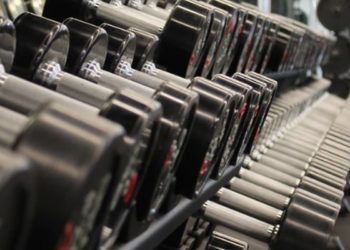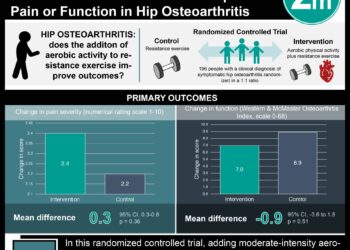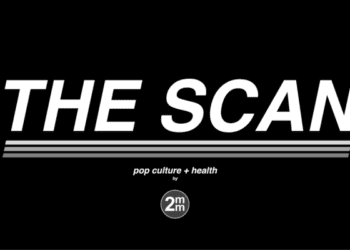Wellness Check: Exercise
Interventions prompted by primary care providers increases physical activity
1. In this study, physical activity (PA) interventions delivered or prompted by primary care providers increased moderate to vigorous intensity physical activity (MVPA) by 14 minutes/week.
2. Trials that used self-report measures showed that participants achieved 24 minutes/week more MVPA compared to controls; however, there was no significant difference in trials that used a device to measure PA.
Evidence Rating Level: 1 (Excellent)
Over the past 2 decades, there have been little improvement in PA participation. Many patients visit their primary care provider at least once a year, creating the opportunity for making PA recommendations. Currently, there is a lack of understanding of the effectiveness of primary care delivered PA interventions. As a result, the present systematic review and meta-analysis of randomized controlled trials (RCT) sought to synthesize the evidence regarding the effectiveness of PA interventions delivered or prompted by primary care providers in increasing MVPA.
Of 14 566 screened records, 46 RCTs were included (n=16 198 participants) from database inception to September 2020. Studies were eligible if they randomly allocated adult participants to any PA intervention delivered or prompted by a primary care provider or usual care group that did not involve physical activity. Trials were excluded if they evaluated exercise referrals. Risk of bias was assessed using the Cochrane risk of bias tool. Data was analyzed using inverse variance meta analyses using random effect models.
Results demonstrated that PA interventions delivered or prompted by primary care providers increased moderate to vigorous intensity physical activity (MVPA) by 14 minutes/week. Furthermore, trials that used self-report measures showed that participants achieved 24 minutes/week more MVPA compared to controls; yet, there was no significant difference when compared to trials that used a device to measure PA. However, the study was limited by the smaller number of trials that used devices to measure MVPA which may have influenced the results. Despite this, the results were strengthened by the large, comprehensive study design thereby increasing generalizability.
Blended physical literacy interventions may improve physical literacy in children
1. In this study, both the quality and quantity blended group (SSPlay) and the quality group (Play) demonstrated a significant increase in physical literacy (PL) compared to the control.
2. There was no interaction effect between intervention groups; although, time effects were found for physical activity (PA) and cognitive planning from baseline to post-intervention.
Evidence Rating Level: 2 (Good)
Physical literacy (PL) has been advocated as a framework to address the lack of PA levels in children. Ecological dynamics represents a novel form of PL that emphasizes a learner centered approach to increase PA levels by making changes in the child’s everyday environment. Because this model has not been conducted in a school setting, the objective of the present randomized controlled trial was to evaluate the effects of two PL interventions that addressed either quality and quantity of play (SSPlay) or quality of play only (Play) in comparison to a control group on PL.
This single center three-arm randomized controlled trial (RCT) included 79 4th grade participants (59.5% female) from 120 students in Hong Kong from January 2019 to March 2019. Students were excluded if they were unable to stand or performing daily tasks. Randomization to each of the three arms (SSPlay n=24, Play n=27, Control n=28) was conducted using Google random number generator. PA was measured by ActiGraph GT3X+ and PL was measured using the Chinese version of the Canadian Assessment of Physical Literacy. Multivariate analysis of variance (MANOVA) was used to assess between group comparisons.
Results demonstrated a significant increase in physical literacy (PL) in both interventions, even at 3-month follow-up. There was no interaction effect between intervention groups although time effects were found for physical activity (PA) and cognitive planning from baseline to post-intervention. However, the study was limited by the small sample size which may influence generalizability. Nonetheless, the results of this RCT demonstrate the potential of a blended ecological design for improving PL in children.
High intensity multimodal training improved aerobic fitness and exercise enjoyment
1. Studies reported moderate to large effects of high intensity multimodal training (HIMT) on aerobic fitness and subjective responses (such as exercise enjoyment), but mixed effects on musculoskeletal fitness.
2. Understanding of HIMT remains limited due to significant heterogeneity with respect to protocols and outcome measures in the literature.
Evidence Rating Level: 1 (Excellent)
Adherence to physical guidelines remains an ongoing issue; particularly due to poor exercise enjoyment and lack of time. New training modalities such as HIMT combine aerobic and resistance training into a single training session which may address these issues. To date, few studies have explored the impact of HIMT on subjective responses such as exercise enjoyment as well as objective fitness measures. As a result, the present study sought to compare the impact of HIMT versus established concurrent training methods on aerobic fitness measures, musculoskeletal fitness measures, and subjective responses.
Of 9587 identified studies, 20 were included (n=619) from database inception until March 2021. Studies were included if they included healthy adults, and compared the impact of combined aerobic and muscular training (into a single session) versus a comparator group on health and fitness measures. Risk of bias was assessed using the Cochrane ROB 2 tool. Outcome measures were analyzed using Hedges’ g and effect sizes were calculated using pooled standard deviations.
Results demonstrated that there were moderate to large effects of high intensity multimodal training (HIMT) on aerobic fitness and subjective responses (such as exercise enjoyment), but mixed effects on musculoskeletal fitness. However, understanding of HIMT remained limited due to significant heterogeneity with respect to protocols and outcome measures in the literature. The present study was limited by the heterogeneity of the HIMT experimental protocols. Nonetheless, the results of this study provide key insight into the effects of chronic HIMT versus other structured training modalities.
High intensity interval training improves fitness in children and adolescents
1. Compared to low to moderate intensities of exercise, high intensity interval training (HIIT) either in connection with physical education class (intra-PE) or as extracurricular sport activities (extra-PE) improved neuromuscular and anaerobic performance as well as improved fasting levels of glucose in school children.
2. Neither form of HIIT led to greater improvements in indicators of cardiovascular fitness and in body composition compared to control interventions.
Evidence Rating Level: 1 (Excellent)
Though children and adolescents spend most of their day in school, they do not perform the recommended amount of physical activity. HIIT has previously been shown to induce favorable cardio metabolic and fitness adaptations in this population. Although students may be involved in either intra-PE or extra-PE forms of HIIT, there has not yet been a systematic review and meta-analysis summarizing these effects on children and adolescents. As a result, the objective of the present study was to address this gap and provide a quantitative analysis of the effects of intra- and extra-PE HIIT interventions on fitness and metabolic outcomes in 5-18 year olds.
Of 108 identified studies, 11 were included (n=1095 participants) from 2019-2021. Studies were included if they evaluated the effects of HIIT (either in connection with physical education classes or in other contexts) on fitness or cardio metabolic parameters, and had healthy participants aged 5-18 years. Study quality was assessed using the Physiotherapy Evidence Database (PEDro) scale. Pooled standard deviations, standard mean differences and Hedge’s g effect sizes were calculated.
Results demonstrated that compared to low to moderate intensities of exercise, intra-PE and extra-PE HIIT improved neuromuscular and anaerobic performance as well as improved fasting levels of glucose in school children. Neither form of HIIT lead to greater improvements in indicators of cardiovascular fitness and in body composition compared to the control interventions. However, the study was limited by variability in the exercise protocols and information concerning the interventions (e.g., type, intensity, duration). Nonetheless, the results of this review provided insight into the effects of intra- and extra-PE HIIT on both fitness and cardio metabolic parameters in school aged children.
Image: PD
©2022 2 Minute Medicine, Inc. All rights reserved. No works may be reproduced without expressed written consent from 2 Minute Medicine, Inc. Inquire about licensing here. No article should be construed as medical advice and is not intended as such by the authors or by 2 Minute Medicine, Inc.





![The ABCD2 score: Risk of stroke after Transient Ischemic Attack (TIA) [Classics Series]](https://www.2minutemedicine.com/wp-content/uploads/2013/05/web-cover-classics-with-logo-medicine-BW-small-jpg-75x75.jpg)

